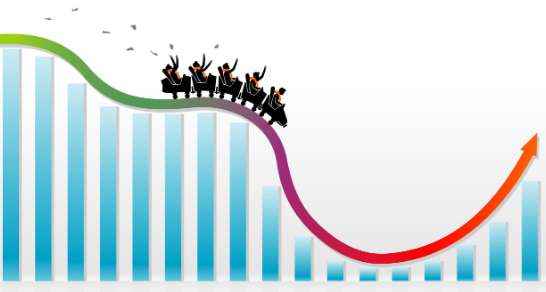Trump Tariff Pause Sparks Nasdaq's Best Day Since 2001—But Is It The 'One Last Bounce'?
Trump's decision to postpone imposing reciprocal tariffs on most countries led to a broad rally in the U.S. stock market on Wednesday. However, historically, similar surges like Wednesday's have occur

Trump's decision to postpone imposing reciprocal tariffs on most countries led to a broad rally in the U.S. stock market on Wednesday. However, historically, similar surges like Wednesday's have occurred during every major market crash.
The Nasdaq recorded its second-best single-day performance in history on Wednesday, marking its biggest one-day gain since January 2001 (during the dot-com bubble burst).
Including Wednesday's rally, 22 of the Nasdaq's 25 best single-day performances ever occurred during the dot-com crash, the 2008-09 financial crisis, or the early stages of the COVID-19 pandemic. Another was on October 21, 1987, two days after Black Monday, and one more was in November 2022.
It's clear that the Nasdaq's biggest single-day gains have almost always occurred during market crashes. Wall Street often refers to such moves as dead cat bounces, relief rallies, or short squeezes—a phenomenon not uncommon during the darkest moments in financial history.
Historically, the worst month for the Nasdaq was October 1987, when it plunged 27%. The second-worst was November 2000, with a 23% drop, followed by March 2020, which saw a 10% decline. So far this month, the Nasdaq is down 1%—even after Wednesday's stunning rebound—while the index posted its worst quarterly performance since 2022 in the first three months of the year.
Trump's latest decision fueled Wednesday's rally, though he was also responsible for the preceding market sell-off. On Wednesday, Trump announced on social media platform X that tariffs on most U.S. trading partners would be temporarily reduced to 10% over the next 90 days to allow room for negotiations.
The statement boosted market optimism, as investors took it as a sign that tariffs might not be as severe as feared, providing immediate relief to markets previously rattled by his reciprocal tariff plans.
The key difference between this market turmoil and the downturns of 1987, 2000-01, 2008, and 2020 is that many investors believe this crash could have been easily avoided—and may still be reversed if Trump changes course.
Regarding Trump's latest move, Wedbush analyst Dan Ives called it the news we and all of Wall Street were waiting for after the president shot himself in the foot.
However, attempting to predict Trump's next move is futile, and for the markets, all uncertainties remain.
Disclaimer: The views in this article are from the original Creator and do not represent the views or position of Hawk Insight. The content of the article is for reference, communication and learning only, and does not constitute investment advice. If it involves copyright issues, please contact us for deletion.